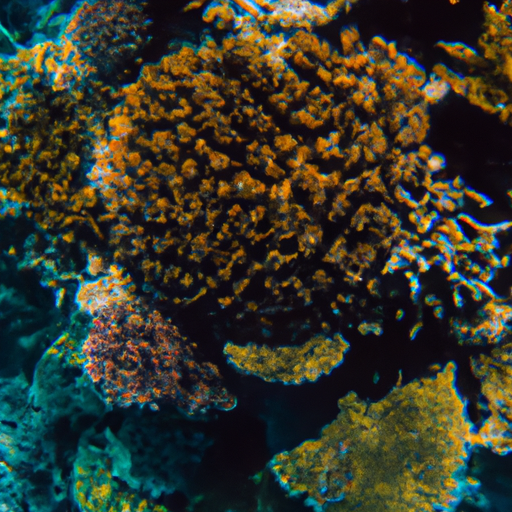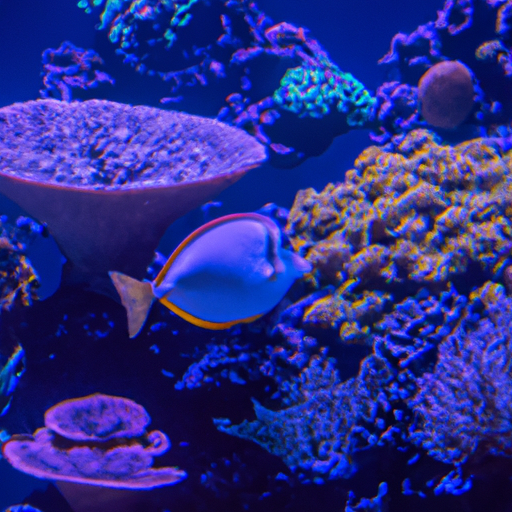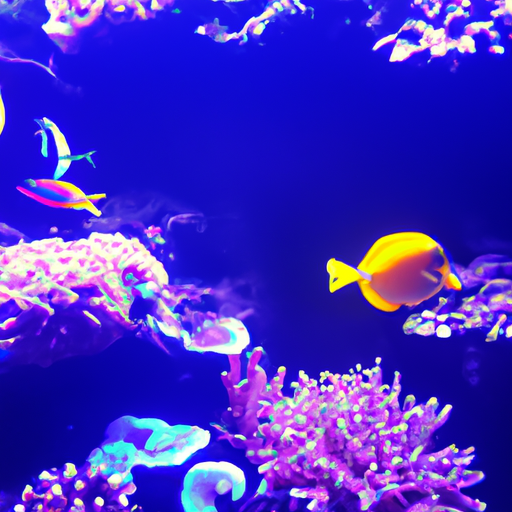
Introduction to the Diversity of Marine Life: Unveiling the Wonders of the Ocean
Exploring the fascinating diversity of marine life is like embarking on a captivating journey into the depths of the ocean. The ocean, covering over 70% of the Earth’s surface, is a vast and mysterious realm teeming with a myriad of extraordinary creatures and ecosystems. From the tiniest microorganisms to the largest mammals, the marine environment is a treasure trove of awe-inspiring biodiversity.
One of the most remarkable aspects of marine life is the incredible variety of species that inhabit the ocean. Estimates suggest that there may be anywhere between 500,000 and 10 million marine species, with only a fraction of them identified and studied by scientists. This immense diversity is a testament to the adaptability and resilience of life in the ocean.
Explorations into the depths of the ocean have revealed an astonishing array of marine habitats, each supporting its own unique assemblage of species. Coral reefs, for instance, are known for their vibrant colors and intricate structures, serving as homes for countless species of fish, mollusks, and crustaceans. The deep-sea trenches, on the other hand, are inhabited by bizarre-looking creatures adapted to withstand the extreme pressure and darkness of these environments.
Marine life is not limited to the surface or nearshore areas; it extends to the deepest realms of the ocean. In fact, some of the most extraordinary species can be found in the abyssal zones, where sunlight never reaches. Adapted to a life of perpetual darkness, these organisms often possess fascinating bioluminescent capabilities, illuminating the depths with their otherworldly glow.
The exploration and study of marine life hold great importance, not only from a scientific perspective but also for the preservation and conservation of our planet. Marine organisms contribute significantly to the balance of ecosystems, providing vital services such as oxygen production, nutrient cycling, and carbon sequestration. Understanding and appreciating the diversity of marine life is crucial for ensuring its protection and sustainable use.
As we delve deeper into our understanding of the ocean and its inhabitants, we continue to unearth new discoveries and unravel mysteries of the underwater world. From the smallest organisms that form the base of the marine food chain to the magnificent marine mammals that captivate our imagination, exploring the diversity of marine life is a never-ending source of wonder and inspiration.
Embark on your own journey into the depths of the ocean and behold the beauty and complexity of the marine world. Witness firsthand the incredible diversity of species that call the ocean home and discover the wonders that lie beneath the surface.
Uncovering the Hidden Gems: A Closer Look at the Breathtaking Varieties of Marine Species
Exploring the Fascinating Diversity of Marine Life: A Journey into the Depths of the Ocean
The oceans cover more than 70% of our planet, making it a vast and captivating world teeming with life. Underneath the surface lies a hidden realm, where an astonishing array of marine species dwell, each more enchanting than the last. From the vibrant coral reefs to the mysterious depths of the abyss, the marine ecosystem holds an immense diversity that continues to mesmerize scientists and explorers alike.
One of the most intriguing aspects of our planet’s marine life is the breathtaking variety of species that exist within its boundaries. From the smallest plankton to the largest whales, the sheer range of organisms is simply mind-boggling. Coral reefs, for example, are bustling metropolises of marine life, providing shelter for countless fish species, invertebrates, and even larger predators like sharks. These vibrant ecosystems are like underwater rainforests, vibrant and full of life.
But it’s not just coral reefs that offer a glimpse into the mesmerizing diversity of marine life. The deep sea, with its frigid temperatures and crushing pressures, is home to some of the most peculiar creatures on Earth. From the anglerfish, with its grotesque appearance and bioluminescent lure, to the giant squid, a legendary creature that has fascinated humans for centuries, the deep sea holds mysteries waiting to be unraveled.
Exploring the world’s oceans is vital for our understanding of the fascinating array of marine species that inhabit it. Scientists and researchers embark on expeditions, equipped with advanced technology that allows them to document and study these incredible organisms. By understanding how different species interact and thrive in their unique environments, scientists can gain valuable insights into the delicate balance of marine ecosystems.
Furthermore, uncovering the hidden gems of marine life can also play a crucial role in conservation efforts. As human activities continue to impact the oceans, it is essential to understand the intricate web of life that exists underwater. By raising awareness about the importance of marine biodiversity, we can take steps towards protecting and preserving these fragile ecosystems for generations to come.
In conclusion, the diversity of marine life is a true marvel, captivating us with its immense variety and beauty. Whether it’s the bustling coral reefs or the mysterious depths of the abyss, each corner of the ocean holds its own hidden gems, waiting to be discovered. By delving into the depths of the ocean, we not only embark on a journey of exploration, but also gain a deeper understanding of our planet’s intricate and interconnected ecosystem.
From Coral Reefs to Deep-Sea Creatures: A Comprehensive Exploration of Marine Biodiversity
Exploring the fascinating diversity of marine life is like embarking on a journey into the depths of the ocean, filled with awe-inspiring wonders and unimaginable beauty. From coral reefs teeming with colorful fish to the mysterious creatures of the deep sea, the marine world is a treasure trove of biodiversity waiting to be explored.
One of the most remarkable aspects of marine life is the sheer variety of species that exist in our oceans. Coral reefs, for example, are often referred to as the rainforests of the sea due to their rich biodiversity. These complex ecosystems harbor an incredible range of marine organisms, from vibrant fish and intricate coral formations to delicate anemones and intriguing sea turtles.
But the wonder of marine biodiversity doesn’t stop at the shallows. As we venture deeper into the ocean, we encounter an entirely different world populated by extraordinary creatures. The deep sea is home to some of the most bizarre and elusive organisms on the planet. From bioluminescent jellyfish to deep-diving sperm whales, these unique creatures have evolved to survive in the extreme conditions of the abyssal zone.
Exploring this diversity of marine life not only fascinates scientists and researchers but also has significant implications for our understanding of the natural world. By studying the intricate relationships between different species and their environment, we gain valuable insights into the functioning of ecosystems and the delicate balance of life on Earth.
Furthermore, marine biodiversity plays a critical role in maintaining the health of our planet. Coral reefs, for instance, provide essential habitats for countless species, protect coastlines from erosion, and support economies through tourism and fisheries. Preserving these fragile ecosystems is not only crucial for the survival of marine life but also for the well-being of humanity.
As we continue to explore the oceans and uncover the mysteries of marine life, it becomes evident that the incredible diversity found within represents a vast and untapped source of knowledge and inspiration. By protecting and conserving our oceans, we ensure that future generations have the opportunity to experience the wonders of marine biodiversity and appreciate the beauty and importance of our planet’s underwater world.
Conservation Challenges and Future Prospects: Preserving the Richness of the Ocean’s Ecosystems
Exploring the fascinating diversity of marine life is like embarking on a captivating journey into the depths of the ocean. The oceans are home to a myriad of organisms that come in all shapes, sizes, and colors. From the smallest plankton to the largest whales, the bustling marine ecosystems never cease to amaze with their complexity and beauty.
However, the exploration of marine life also brings to light the conservation challenges that pose a threat to these ecosystems. Human activities, such as overfishing, pollution, and climate change, are taking a toll on the delicate balance of marine life. As a result, many species are facing extinction, and entire ecosystems are at risk of collapse.
Preserving the richness of the ocean’s ecosystems requires a multifaceted approach. Efforts are being made to establish marine protected areas, where marine life can thrive without human interference. Additionally, sustainable fishing practices and the reduction of plastic pollution are crucial in maintaining the health of our oceans.
Scientific research plays a vital role in understanding marine ecosystems and developing effective conservation strategies. Advanced technologies, such as remotely operated vehicles (ROVs) and underwater drones, enable scientists to explore the depths of the ocean and collect valuable data on marine life.
Exploration of the ocean’s biodiversity not only contributes to our understanding of the natural world but also holds the promise of future prospects. Marine organisms have a plethora of untapped potential in providing solutions to various medical, industrial, and technological challenges.
For instance, coral reefs, known as the rainforests of the sea, are sources of novel compounds with potential medicinal properties. Deep-sea creatures have evolved unique adaptations that can inspire the design of new materials and technologies. Exploring and studying these organisms could unlock a wealth of knowledge and possibilities for the future.
The conservation of our oceans is not just about preserving their beauty but also about ensuring the survival of countless species and the services they provide. It is a collective responsibility to protect and restore the richness of marine ecosystems, for the sake of both current and future generations.
In conclusion, exploring the fascinating diversity of marine life takes us on an extraordinary journey into the depths of the ocean. Nevertheless, it also highlights the conservation challenges we face in preserving these ecosystems. By implementing effective conservation measures and conducting scientific research, we can safeguard the richness of our oceans and tap into their future prospects.


